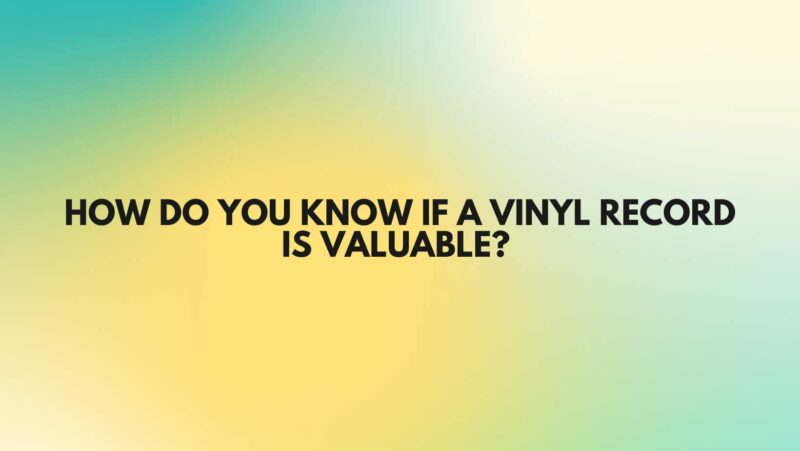Vinyl records have experienced a resurgence in popularity, with collectors and enthusiasts seeking both the nostalgia of analog sound and the allure of rare and valuable records. If you’re wondering whether your vinyl collection holds any hidden gems, this comprehensive guide will help you understand the factors that determine the value of a vinyl record.
- Artist and Album
The most significant factor influencing a vinyl record’s value is the artist and the specific album. Some artists and albums have enduring popularity, making their vinyl releases highly sought after. Iconic names like The Beatles, Led Zeppelin, and Pink Floyd often command high prices in the collector’s market.
- Rarity and Scarcity
Rare or limited-edition vinyl records tend to be more valuable. Factors contributing to rarity include:
- Limited Pressings: Records with a low production quantity are often considered rare. This can result from limited releases, promotional copies, or special editions.
- Regional Variations: Records released in specific regions, countries, or with unique covers for particular markets can be valuable due to their scarcity.
- Withdrawn or Banned Records: Records that were withdrawn from circulation or banned due to controversial content can become valuable collector’s items.
- Condition of the Record and Sleeve
The condition of both the vinyl record and its sleeve significantly impacts its value. Records in mint or near-mint condition, free from scratches, warping, or surface noise, are more valuable. Additionally:
- Original Sleeves: Records in their original sleeves or covers, especially if they are in good condition, tend to be more valuable than those with generic or replacement sleeves.
- Unplayed or Sealed Records: Unopened, sealed records are highly sought after by collectors and often command premium prices.
- First Pressings and Early Releases
Original pressings of vinyl records, especially those released close to the album’s debut date, are often considered more valuable than reissues or later pressings. Collectors seek the authenticity and sound quality associated with these early releases.
- Vinyl Color and Variations
Unique vinyl colors or variations, such as colored vinyl, picture discs, or records with special inserts or packaging, can increase a record’s value. These variations appeal to collectors looking for distinctive items to add to their collection.
- Historical Significance
Vinyl records that hold historical significance, such as those tied to major cultural events or music milestones, often command higher prices. Examples include records associated with legendary live performances or iconic album releases.
- Promotional Copies and Test Pressings
Promotional copies, sent to radio stations, reviewers, or industry insiders, can be valuable due to their scarcity. Test pressings, used to verify the sound quality before mass production, are even rarer and sought after by serious collectors.
- Genre and Genre Trends
Musical genres and trends can affect a record’s value. Some niche genres or obscure subgenres have dedicated collector bases willing to pay a premium for rare and obscure releases within their field of interest.
- Collectibility and Demand
Ultimately, the value of a vinyl record is influenced by its demand within the collector’s market. Records that are in high demand due to their cultural significance, rarity, or historical importance tend to be more valuable.
- Market Conditions
Market conditions can fluctuate over time. Records that were once considered valuable may see changes in value based on evolving collector tastes and market trends.
Conclusion
Determining the value of a vinyl record is a multifaceted process that involves considering various factors, including artist, rarity, condition, and demand. Whether you’re an avid collector or simply curious about the worth of your vinyl records, understanding these criteria will help you navigate the exciting world of vinyl collecting. Keep in mind that the value of a vinyl record can change over time, so it’s essential to stay informed about market trends and continue exploring the music and culture that make vinyl records timeless treasures.


